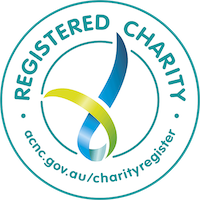21st November 2019
The training that AV delivers to Child Protection and other agencies is helping service providers to understand the impacts of family violence beyond the physical. Thereby offering appropriate and targeted responses, and providing positive impact on practice and outcomes for families.
Earlier this year a mother named Zara* left a physically abusive partner; taking her children with her − but the challenges weren’t over yet. The children’s behaviour, significantly influenced by the violence they had seen, became difficult with daily tantrums and power struggles. For Zara, taking her kids to school was a time of immense anxiety. To get the children ready in time for school each morning was a tremendous battle, but for the most part, she got them there.
The school, unaware of the family history and situation, contacted Zara frequently asking her to come to meetings to discuss her children’s lateness; repeatedly insisting that she must have the kids to school on time.
After surviving an abusive relationship and doing everything she could, she now felt an authoritative pressure placed on her. It added to the guilt she already felt for exposing her children to her partner’s violence, and just didn’t seem fair. Zara’s story is not uncommon.
Since incorporating the Safe and Together framework into programs in March 2018, AV has now begun building a team of accredited trainers, offering training across the state. The model has been presented to staff from many agencies, including Child Protection and Family Safety Victoria and is generating positive responses within the sector. Agencies receiving the education have praised the model for its ability to immediately improve child safety while also supporting adult survivors, and engaging with the perpetrator around their parenting choices.
“Moving from victim-blaming to focusing on the perpetrator as the responsible party for family violence is an overdue change,” says AV’s Project Manager, Karen Piscopo.
“Partnering with adult survivors of family violence, acknowledging their strengths and all they are doing – from packing lunches to helping kids understand trauma – to keep themselves and their children safe is something they have not heard before.”
The Safe and Together model supports professionals in their day to day work to help adult survivors recover following their abusive relationships and begin reconnecting with themselves and their children.
“Only from a sense of safety can we focus on recovery from trauma,” says Karen Piscopo.
Adult survivors with long histories in the welfare sector welcome the change and greater sense of justice the Safe and Together model brings. Another mother in a similar situation to Zara recently told her caseworker that: “After 20 years of living with a person who was physically and emotionally abusive to me, an absent and abusive father, this is the first time that a service has held him accountable. Until now, he has gotten away with it in the shadows while I take the blame.”


